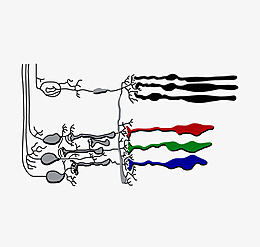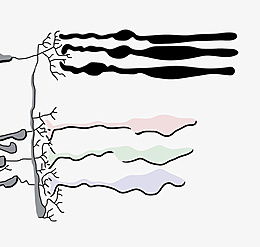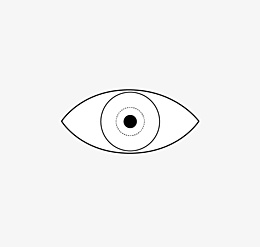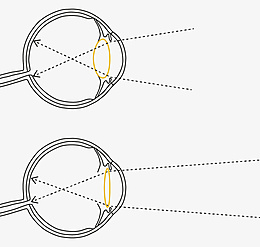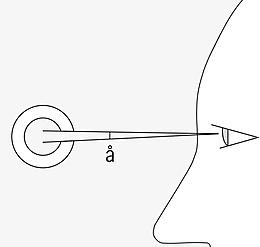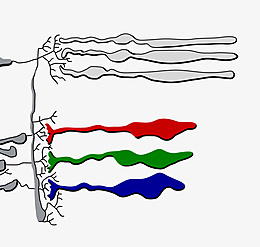The eye has different receptor systems for processing optical stimuli. The rod and cone systems are for visual perception. The
rods are distributed uniformly across the retina. They are characterized by their high sensitivity to light and enable wide-angle vision at low
levels of illuminance (
scotopic vision). However, the visual acuity is low and colors are not perceived. The
cones on the other hand are mainly concentrated in the focal point of the lens (fovea centralis). They enable crisp, colorful vision at a limited angle of view, but require high illuminance levels (
photopic vision).
Current research has shown that there is a further group of receptors in the retina: light-sensitive ganglion cells. These are not used for vision but provide important information about brightness, and therefore the duration of day and night. This perception of ambient brightness plays an important role in the
circadian rhythm: morning light activates us, but with the onset of darkness sleep hormones are released to make us tired. Light-sensitive ganglion cells thus control our inner clock.


